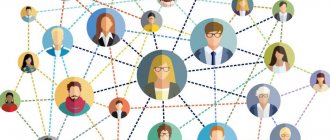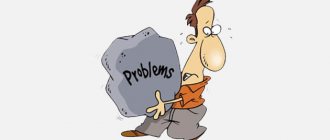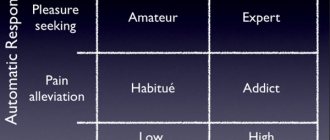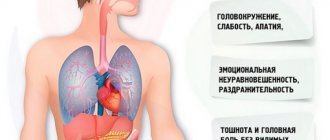Adolescence is usually called a difficult period. People often use the term “troubled teenager.” Young boys and girls are distinguished by their deviant behavior, which they do not hide. What are the reasons for all the signs of uncontrollable behavior? We will also consider the forms, classification and prevention of such behavior.
Adolescence is also called “transitional” (and for good reason). It is during this period that the child stops unconditionally obeying his parents and begins to express his opinion and defend his own interests. It is difficult for parents to readjust and accept the fact that their child has matured. Now he needs not to indicate, but to negotiate, given that his own thoughts and ideas may be absurd and far from reality.
Deviant behavior that manifests itself in adolescents can be called a child’s attempt to defend his position. Since children are more sincere in their manifestations, their behavior is emotional and vibrant. They are still just trying out their own strengths, which were previously suppressed by their parents’ prohibitions. Now they want to open their wings and fly like adults. Naturally, at first everything will turn out badly for them.
Deviant behavior is often destructive, with teens turning to drugs, skipping classes, fighting with other kids, and even breaking the law. This is also a way to express yourself. The less parents can cope with their own child, the more obvious the need to contact a psychologist becomes. You can get your first consultation on the psychological help website psymedcare.ru.
What is deviant behavior?
What is deviant behavior? It refers to the commission of actions that contradict the norms of morality, ethics and generally accepted laws. When a person commits an act that is contrary to foundations and standards, they try to stop him in various ways, for example, treatment, isolation, correction or punishment.
Deviant behavior is not considered a disease, since a person can stop doing bad things at any time. It has many definitions:
- Deviant behavior is a threat to the physical and social survival of a person in society or a group. Sociology involves disrupting a person's learning of social norms and moral values.
- Deviant behavior in medicine takes the form of deviation in moral behavior when a person acts or speaks against the background of neuropsychic pathology, borderline state and mental health.
- Deviant behavior in psychology is a deviation from generally accepted and moral norms, when a person causes damage to himself, others, and public well-being.
The social norm, which people are guided by when assessing the actions of teenagers and others, is a set of rules and principles of what is acceptable to do. Everything that goes beyond these limits is called deviant. Accordingly, one can distinguish:
- Positive deviation, when a person destroys social foundations for the sake of creation, creativity, and progress of society.
- Negative deviation, when disorganizing, dysfunctional, destructive actions are committed.
Deviant behavior often manifests itself when socially acceptable goals do not correspond to real possibilities. A person is forced to resort to immoral, illegal, bad actions in order to achieve his goal. A striking example would be the desire to achieve wealth. Since not all people are given jobs that pay well, many engage in various deviant acts:
- They commit criminal acts, such as stealing money.
- They work in the field of intimate services.
- Contact criminals, etc.
Another striking form of deviant behavior is protest, non-acceptance, and disobedience to social norms. A person openly and demonstratively fights what is accepted in society.
Deviant behavior is the result of a person’s unwillingness or inability to adapt to social rules and its requirements. In some situations, it can be called an attempt to find new ways to achieve a happy life, where a person’s freedom and desires are realized.
Deviant behavior of adolescents
When talking about bad behavior, the behavior of teenagers is often mentioned, who clearly demonstrate all forms of deviation. It is impossible to say that deviant behavior is a consequence of one reason. Each group of teenagers has their own motives that prompted them to act contrary to social norms.
Modern society is distinguished by its commercialism. The only value is money. Teenagers are looking for ways to easily obtain them, noting that study and work are too time-consuming and thankless. This is due to the economic situation in the country, as well as the financial problems that the child observes in his family. A teenager’s desires are much stronger than social prohibitions, so any means of achieving goals are tried.
Teenage behavior is dictated by desires (“I want”) and the desire to gain approval from important people. The authorities in this case are friends or people from whom the teenager takes examples. In rare cases, parents are the authorities. A teenager wants to live for his own pleasure, which is why he allows himself to do things that can be approved by his circle of friends. This trend begins to decline after age 18.
It is still difficult for a child not to succumb to the influence of others. His manifestations are the most vivid and sincere. Often he goes against social rules in order to attract attention to himself. Deviant behavior of adolescents can be:
- Delinquent illegal.
- Antisocial.
- Anti-disciplinary.
- Auto-aggressive: self-harm, thoughts of suicide.
Deviant behavior is dictated by three factors:
- Social environment.
- Conditions of education.
- Physical development.
Teenagers begin to carefully examine their appearance. Girls strive to be slim and busty, and guys strive to be tall and pumped up. If someone breaks the norm, he has to prove his importance to society in other ways. Some teenagers go “underground”; they are called white crows. Others begin to show their superiority through deviant behavior: fight, commit illegal acts, smoke, drink alcohol, etc.
Psychologists believe that the problem of developing deviant behavior is that a person matures physically faster than psychologically. He notices that he is becoming an adult, which happens at puberty. At the same time, at the mental level he continues to remain a child.
Emotional instability, the lack of developed psychological qualities of an adult, but the presence of an adult body ready for reproduction and subject to hormonal influences - all contribute to the commission of actions that will be condemned by society and parents.
Early ripening
Most teenagers fall into the first category - well adapted to life from birth to 11 years - the category of “precocious”. If their parents got along well with them until the age of 11, then it doesn’t matter how difficult it will be for all of them during adolescence. In the end everything will work out well.
Of course, the tragic consequences of behavior such as excessive drug use or promiscuity can threaten a teenager's development and relationships with his parents. But, except for these extreme cases, if parents have maintained a good relationship with their children up to 11 years of age, they can rest easy.
Of course, in this category there are teenagers who do not want to talk about many things with their parents, because they are ashamed, or they are too unsure of themselves, or unsettled. Others are very lucky. They have a great self-image and continue to communicate well with their parents. They too will go through periods of detachment and doubt, as the body, mind and emotions change much more quickly during adolescence than at any other time in life; but these are natural problems and these teenagers will be fine.
For example, even normal, well-adjusted children often snap at their parents. It's quite common for 11-year-old boys to get angry and 13-year-old girls to get annoyed and make nasty comments. It's part of the natural process of growing up. Partly it's about hormones and physical development. This is partly due to anxiety and fear, as teenagers realize that in just a few years they will have a responsible job or even a different last name. These are very profound changes, and often the teenager's only reaction to such anxiety is verbal attacks on his parents. By the way, adults, finding themselves in the same stressful conditions, do exactly the same.
In response to such behavior, parents can tell the teenager: “I understand that you are angry - this happens to both children and adults. But at the moment you are not very pleasant company, so why don’t you have dinner in your room?”
Signs of deviant behavior
By what signs can deviant behavior be recognized?
- It differs from the generally accepted one.
- It expresses a person’s disadaptation to social norms.
- It is subject to harsh and negative assessment by society.
- It causes damage either to oneself, or to others, or to social well-being.
- It leads to a constant change of friends and conflicts with people.
- It leads to failure in school, absent-mindedness, and inability to complete a task.
- It develops infantility. A person is not able to provide for himself and be responsible for his life as a whole.
- It develops fears, phobias, depressive or nervous disorders.
- It provokes the development of low self-esteem and complexes.
- It is expressed in conflict and the inability to “take a hit.” Frequently leaving home.
- It develops numerous psychological defenses and impulsive behavior.
- It is characterized by psychosomatic illnesses.
- It is expressed by aggression and stubbornness.
- It is expressed by atypical and destructive interests, inclinations, and hobbies.
A positive sign of deviant behavior is the manifestation of talent. If society does not provide a gifted person with a favorable environment, then he develops nervous and mental disorders, impaired physical development, and a victim complex.
Vivid examples of deviant behavior aimed at self-detriment are:
- Scarring or piercing, tattooing.
- Causing mutilation.
- Destroying your creativity.
- Eating disorder.
Reasons for adolescent deviations from behavioral norms
There are many factors influencing the development of deviant behavior in adolescents. Pedagogy divides the causes of deviant behavior into 3 groups - social, medical-biological and mental.
Social reasons
These include the influence of family, school, and surrounding society. It is well known that children from disadvantaged families are much more prone to antisocial behavior. These are poor academic performance, vagrancy, alcohol and drug use, crime, inadequate response to comments, and aggressiveness.
A teenager from a seemingly prosperous family can also be in danger. Formal relations between parents, constant clarification of relationships, indifferent attitude towards the child, excessive strictness in upbringing or, on the contrary, spoiling - all these are risk factors for the development of deviant behavior.
Social reasons include mistakes made by teachers. Adolescence is the period of study at school or vocational educational institutions. The increased vulnerability of adolescents makes them especially vulnerable to the tactlessness and cruelty of teachers. Unfortunately, such situations are rare, but they do occur.
In addition, in adolescence, painful conflicts with a group of classmates may arise.
Medical and biological reasons
This group includes hereditary causes. Children of drinking parents often experience developmental delays and other pathologies, including character traits. Mental deficiency can be hereditary, leading to social maladjustment. Deviations in development can be caused by serious illnesses or injuries.
The increased rate of acceleration is also a risk factor. The physical and sexual development of modern adolescents is ahead of social adaptation. This disproportion is also a destabilizing factor.
Mental causes
The psyche of a teenager is a topic for another discussion. During this period, a painful process of character formation occurs.
The inability to understand oneself, the influx of new sensations, physical maturation, and the formation of sexuality can cause deviant mental reactions:
- aggressive behavior;
- refusal to communicate, leaving home;
- feelings of despair and fear, depression;
- blind imitation of authority;
- the desire for independence, denial of the life experience of elders and revaluation of one’s own;
- increased sexual desire.
Forms of deviant behavior
It should be understood that deviant behavior is not a static value. Much depends on the society in which the teenager lives. If extortion or taking bribes is acceptable in society, then at the social level it will be condemned, but at the interpersonal level it will flourish. Typical forms of deviant behavior are:
- Criminality.
- Addiction.
- Alcoholism.
- Gambling.
- Prostitution.
- Suicide.
- Mental disorder.
R. Merton identifies 4 types of deviation:
- Innovation is the achievement of social goals using methods not accepted in society:
- Financial pyramids.
- Prostitutes.
- Great scientists.
- Blackmailers.
- Ritualism is the denial of social goals and the excessive absurdity of ways to achieve them. For example, scrupulous people who check their work many times, forgetting about the final goal.
- Rebellion is the denial of both goals and methods of achieving them, the desire to replace them with something new. These are the so-called revolutionaries.
- Retreatism is an escape from the need to achieve goals. For example, homeless people, drug addicts, alcoholics.
Other forms of deviant behavior among adolescents are:
- Hyperkinetic disorder – impulsivity, inability to complete things, recklessness, tendency to get into accidents. Characterized by a lack of distance from adults and low self-esteem.
- Socialization disorder – building poor relationships with those in power. They show aggression towards them, while having suppressed qualities: depression, loss of interests, severe suffering, etc.
- Conduct disorder that is limited to the family - aggressive and antisocial behavior in relationships with relatives. For example, arson, theft, cruelty.
- Unsocialized disorder is a distrustful attitude towards absolutely all people, a desire to isolate oneself from them. The teenager becomes aggressive, cruel, pugnacious, rude. In rare cases, good relationships are established, but there is no trust.
- Delinquency is the manifestation of behavior that violates rules or the law. For example, theft, fraud, speculation.
Separately, sexual deviant behavior should be noted. Children mature early and experience sexual desire. Those who reach late puberty are often targets for bullying. They can strip naked, play with their genitals, demand intercourse with animals, etc. If this behavior does not change over time, then it turns into a habit that a person acts out as an adult.
Types of teenagers with deviant behavior law article on the topic
Tsykoza L.G., Deputy Director for HR
MBOU Secondary School No. 8, Krasny Sulin
TYPES OF ADOLESCENTS WITH DEVIANT BEHAVIOR
Materials for the pedagogical council
The characteristics of adolescents with deviant behavior differ in age-related developmental conditions, types and nature of behavioral deviations, in their personal qualities, interests, inclinations, and needs. The characteristic features of adolescents with deviant behavior are traced, as well as their various classifications.
Each qualification is based on the typical positive and negative moral and psychological qualities and properties of the adolescents being studied.
The first group consists of students with a passive life position, withdrawn, gloomy, distrustful, and weak-willed. In acute situations, they take a position of non-interference and periodically come into conflict with teachers and individual students. They perform mediocrely, skip classes, do not do homework, and are indifferent to work. They can succumb to bad influences and commit disciplinary offenses, but they can also refrain from them in the presence of distractions. They are willing to be influenced by authorities, both negatively and positively.
The second group includes egoists, stubborn students who have a complete gap between word and deed, and are inclined to support a disciplinary offense at all costs rather than oppose it. They study poorly and grossly violate order. They are hot-tempered, ill-mannered, rude, often show an inadequate reaction to comments, smoke, drink, use foul language, are subordinate to students belonging to the third group, subservient to them and act on their orders, violate discipline when they feel supported. At the same time, they are inquisitive in certain areas of knowledge, respond positively to encouragement, can show a creative attitude towards the type of activity that interests them, and are able to reconsider their views and beliefs under the influence of systematic and long-term influence on them in the right direction.
The third group includes those who are deceitful, pugnacious, arrogant, who systematically enter into conflicts with others, commit antisocial acts and offenses, try to negatively influence other students, drink alcohol, and recognize and respect only the authority of physical force. These teenagers are aggressive and cruel with their peers. They take an antagonistic position towards parents and teachers. They have developed a stable aggressive attitude towards the phenomena of social life, towards opinions and judgments that do not coincide with their own; they do not recognize morality and do not take into account its norms.
A. Kochetov proposes a different principle for distinguishing adolescents with deviant behavior. It is based on the indicative classification of adolescent delinquents developed in our psychological science, based on the needs of their personality structure.
The first group of difficult adolescents is characterized by a stable complex of socially anomalous, negative, immoral, primitive needs, and a system of openly antisocial views. Teenagers in this group have distorted ideas about camaraderie and courage, and the sense of shame has weakened. They are cynical, rude, embittered, aggressive. Selfishness, indifference to the experiences of others, lack of hard work and desire for consumer pastime, dependency and acquisitiveness are their typical characteristics.
The second group consists of teenagers with deformed needs, the desire to imitate those juvenile delinquents who are distinguished by a stable complex of immoral needs and openly antisocial orientation of attitudes and views. Distinguished by heightened individualism and quarrelsomeness, these teenagers strive for a privileged position, oppressing the weak and younger.
The third group of difficult teenagers is characterized by a conflict between deformed and positive needs, relationships, interests, and views. Teenagers of this group realize the unworthiness of the actions they commit. However, the correct moral views they have do not become their convictions. A struggle of motives often manifests itself: either selfish desires for pleasure, or remorse and reluctance to become the subject of condemnation in the eyes of authority figures.
The fourth group consists of adolescents with slightly deformed needs. They are characterized by lack of will, easy suggestibility, frivolity, instability, lack of faith in their own strength, and ingratiation with strong-willed comrades. The fifth group includes teenagers who took the path of crime by accident. They are passive and susceptible to various influences.
Table of the predominant causes of behavior in accordance with the leading personality flaws:
| Leading personality flaws | Predominant reasons for the behavior and how to overcome them |
| 1. Rudeness | a) affectivity, lack of self-control, deficiencies of the nervous system: the main direction of work is the creation of a calm environment, the help of a doctor and psychologist |
| b) self-confident, arrogant: constant analysis of their behavior, inclusion in collective activities, and cultivation of the ability to obey are necessary | |
| c) at one time unfairly offended and supported by bad people: a sensitive approach to students is crucial, convincing them with specific examples that bad people make up an insignificantly small proportion; teaching teenagers the ability to understand people | |
| 2. Laziness | a) weak-willed, unaccustomed to overcoming difficulties: it is necessary to create for them such conditions where tension will gradually increase, requiring volitional efforts; debunking false authorities |
| b) complete indifference to learning: using the entire arsenal of pedagogical means to awaken curiosity | |
| c) reassessment of one’s own abilities: showing specific examples of one’s own reassessment | |
| 3. Closedness, desire to be outside the team | a) self-confidence, opposing oneself to the team: debunking inflated self-esteem |
| b) unfairly offended by someone or bullied by someone in the group: it is necessary to identify the reasons and persons who have a bad attitude towards this student, to overcome the reasons | |
| c) some shortcomings (short stature, peculiarities of appearance): tactful conversations, persuasion, presentation of categorical demands on other teenagers not to pay attention to it | |
| 4. Tendency to crime | a) initiators, organizers, promoters of crime: use their energy in various assignments |
| b) performers who are easily susceptible to bad influence: include in positive activities that contribute to correction | |
| c) acting alone: to be included in a collective exciting activity |
The socio-psychological aspect of deviant behavior is reflected in I. Nevsky’s classification. They identified the following groups of adolescents:
• 1st group – positively oriented, but unstable, easily subject to one or another negative influence;
• Group 2 – diligent but underdeveloped children who chronically lag behind their peers in their studies;
• 3rd group – passive, lack of initiative, lazy;
• 4th group – disorganized, uncollected, with unstable attention, motor disinhibited;
• 5th group – undisciplined, disobedient, rude, active disruptors, violators of discipline, negatively influencing peers;
• 6th group – spoiled by improper upbringing and negative example of parents, with a difficult, quarrelsome character;
• Group 7 – impulsive, with unstable, frequently changing mood, disharmonious.
An interesting classification of adolescents with deviant behavior is given by T. Molodtsova. She identifies 10 types of maladjusted adolescents.
• “Self-Destructors” – teenagers who torture themselves unnoticed by others. As a result, anxiety, fear, and alienation develop, leading to deprivation, autism, and sometimes suicide. Such teenagers simply do not know how to change anything either in themselves or in others. They are passive, anxious, lonely, timid, disappointed in themselves and in people.
• “Unable” - teenagers who cannot influence others and change something in themselves due to the loss of any guidelines or their absence - work skills, the ability to restrain themselves, outside support, etc. Such teenagers are often correctly aware of their difficulties (underachievement, lack of discipline, isolation from the team), but not knowing how to fix it.
• “Inert” teenagers are those who do not want to change anything due to basic laziness, passivity, and indifference.
• “Conformists” are teenagers who, by their very nature, are predisposed to adapt to everything too easily. This happens thoughtlessly or on purpose, which becomes a negative trait of an opportunist or conformist. This habit is especially dangerous when a teenager finds himself in negative conditions.
• “Destructors” are teenagers who, having certain negative qualities (deceitfulness, aggressiveness, power, rudeness, nihilism, etc.), turn them on others. They do not feel remorse, do not want to change anything about themselves, they try to remake the world for themselves, and at the same time quite negatively.
• “Resigned” teenagers are those whom life circumstances or they themselves have placed in unfavorable, difficult, unbearable conditions. They understand this, but they cannot do anything about it. These are children living in families where parents drink, staying in groups where they are ignored, suffering humiliation from someone, but doing nothing to change the situation.
• “Self-loving” – stubborn teenagers. They are self-confident, selfish, do not see their shortcomings and consider themselves the height of perfection. They perceive any comments addressed to them with hostility and do not want to change anything about themselves.
• “Demonstrative” – a category of teenagers who manifest themselves negatively due to forced circumstances (the desire for self-affirmation among friends, the desire to “revenge” an unjust teacher or to attract the attention of parents). Such teenagers do not change until changes occur in provoking circumstances.
• “Misguided” teenagers – do not understand that they are behaving negatively and do not strive to improve; they do not realize that with their behavior, character and actions they are causing harm or inconvenience to others. They may show tactlessness, insensitivity, inattention, indifference, etc., they do this not on purpose, not out of malicious intent.
• “Striving” – teenagers who, having fallen into this category, actively strive to improve.
The variety of aspects of the behavior of adolescents with deviant behavior makes it possible to see the essence of this rather complex social phenomenon and take timely measures to prevent delinquency and juvenile crimes.
Reasons for deviant behavior
Many reasons for deviant behavior lie in the child’s family relationship with his parents. Single-parent families are the most common factors that shape negative qualities in adolescents. When one mother (less often a father) is involved in raising a child, one behavior pattern is played out. The child does not have diversity and a holistic picture of the world.
It is not uncommon to have difficult teenagers from two-parent families. Here, the reasons for deviant behavior lie exclusively in the relationship between parents and children or between the parents themselves. Outwardly, some families may look extremely prosperous and happy. However, if a child grows up in their family who exhibits deviant behavior, then this indicates that something is wrong in the relationship between relatives.
Deviant behavior may be a consequence of the bad behavior of the parents themselves. Mom and dad themselves exhibit antisocial habits, so the child repeats them. Often difficult teenagers grow up in conflict families, where parents and children are constantly in conflict. For them, this behavior is already becoming normal.
Special attention should be paid to the “alcoholic” family. If parents drink or there is a chronic alcoholic in the family, this will negatively affect the development of the child.
Deviant behavior is often the result of various psychological problems that develop in a child as a result of upbringing or family environment:
- Fears.
- Complexes.
- Insufficient supervision.
- Unexpressed aggression.
- Daydreaming and fantasy.
We should not exclude deviant behavior that is provoked by various mental disorders in the child himself or in one of his loved ones. In the first case, the teenager may not fully assess the correctness of his own behavior. In the second case, the teenager experiences some pressure from the outside, which forces him to run away from trouble.
Combating deviant behavior and prevention
Whatever the reasons for the deviant behavior of children and adolescents, this should in no case be ignored.
If deviations are associated with mental disorders, then such a child must be shown to a psychiatrist so that the specialist can provide qualified assistance and prescribe a course of treatment.
Crimes committed by mentally healthy teenagers should not go unpunished. The penalty is usually determined by the criminal code or the code of administrative offenses, depending on the severity of the offense and the age of the offender. However, in addition to preventive measures, it is advisable to understand the reasons for such behavior. To do this, you need to contact a psychologist who will conduct a diagnosis with the child and help you figure out why this problem arose. In any case, the manifestation of deviant behavior in a teenager should not be left to chance.
Often, a timely conversation with a psychologist helps to understand the child’s problem and find ways to solve it. This, in turn, will help avoid deviant behavior in the future. Namely: it will help a teenager learn to realize their needs without resorting to committing criminally and administratively punishable acts, and will also reduce the risk of alcohol and drug addiction.
Prevention of deviant behavior is quite simple.
Its main essence lies in the formation of moral habits in children at a fairly early age - stable needs to perform moral actions. Moral habits include rules of communication, culture of behavior, discipline, politeness, attention to others, honesty towards oneself and others, responsibility for one’s actions. Once they are formed, the problem of violating moral and legal norms disappears by itself.
Another very important preventive action is to conduct preventive conversations with children and adolescents regarding various antisocial phenomena. They should include the following aspects:
- an explanation of the danger of asocial phenomena for the life and health of both one’s own and those around them;
- an explanation of the consequences that deviant behavior can lead to and what penalties are provided for offenders.
It is also very important to observe the child’s behavior. Parents need to know what the teenager is interested in, who his friends are, how he spends his free time. But at the same time, do not put pressure on him with overprotection and excessive control and give him the opportunity to choose.
As a rule, in this case the child will have no reason to behave antisocially. If, nevertheless, a teenager begins to show deviations in behavior, parents who are interested in the life of their child can notice this in time and have a conversation with him or turn to a qualified psychologist for help.
Compliance with such fairly simple measures will help to avoid the manifestation of deviant behavior in the child and protect him and those around him.
Classification of deviant behavior
Different types of deviant behavior are divided into 3 classifications:
- Crime level – commission of criminally punishable acts:
- Addiction.
- Alcoholism.
- Crime.
- Suicide.
- Pre-criminogenic level – do not pose a danger to society:
- Minor offenses.
- Use of toxic, alcoholic, and narcotic substances.
- Violation of moral standards.
- Avoidance of social activities.
- Disturbing behavior in public places.
- Pre-deviant syndrome – factors that develop stable deviant behavior:
- Aggressive behavior.
- Affective behavior.
- Family conflicts.
- Antisocial forms of behavior.
- Negative attitude towards studying.
- Low level of intelligence.
Prevention of deviant behavior
Psychologists note that preventing deviant behavior is much better than the need to treat or eliminate such manifestations of adolescents. However, prevention is quite difficult to carry out, since we are talking about the entire social structure.
A lot starts with family. If parents have conflicts, infringe on the rights and freedom of the child, smoke, drink or use drugs, are criminals or commit antisocial acts, then the child will certainly develop similar manifestations. It should not be surprising that a difficult teenager grows up in a dysfunctional family. The more difficult the situation in the family, the more difficult the child becomes.
At the social level, there are many problems that do not help an individual grow socially adapted and mentally healthy. Vagrancy (poverty), alcoholism and drug addiction are actively flourishing. In a country with a depressed economic level, it is simply impossible to do without criminal activities. At first the child sees all this, then he himself comes to the idea of trying such forms of behavior that are condemned in society, but help to achieve peace of mind in the conditions of an unfavorable situation in the country.
Parents, educators and teachers are the guides who should develop positive and moral qualities in the child. However, do not forget that:
- These guides themselves are people who may have negative character traits.
- These guides themselves can create situations from which children cannot escape through good deeds.
It should be understood that the child comes from the good intention of doing well for himself, maintaining his health and mental balance. If he is in a situation or environment from which he should escape, then he will look for different ways to achieve the goal. If only by asocial and immoral actions he manages to make himself happy, then this will become his model of behavior. And the environment or situation is often shaped by parents, educators and teachers in childhood and by society and the country in adulthood.
Causes of deviant behavior in childhood
The causes of deviant behavior in children and adolescents are many and very diverse. But by and large they can be divided into two large groups - these are:
- medical reasons;
- reasons of a social nature.
We will look at them in more detail.
From a medical point of view, various mental illnesses can be the causes of deviant behavior. Most often, behavioral deviations occur in patients with disorders of consciousness. For example, people with schizophrenia are characterized by a disorder of the volitional sphere, which is called drift. This manifests itself in their passivity and inability to make independent decisions. In this state, sick people are very susceptible to external influence and tend to reproduce the behavior of others, including illegal and asocial. They do not form their own attitude to what is happening, which is why they cannot critically evaluate their actions and realize their illegality.
Mental retardation or mental retardation can also be a cause of deviant behavior in children and adolescents. With this disease, the entire intellectual sphere suffers, which is why patients become very suggestible and uncritical of their actions and actions, and they often make rash decisions. All this leads to the risk of developing deviant behavior.
People suffering from psychosis are also at risk. For example, in patients with manic-depressive psychosis (according to the International Classification of Diseases, Tenth Revision (ICD-10) affective bipolar disorder), who are in a state of affective disorder such as depression, there is a high risk of committing suicide, and in addition, many patients suffer from alcoholism and drug addiction.
Deviant behavior is no less common in mentally healthy people. In this case, the reasons for its occurrence are social in nature.
The first manifestations of deviant behavior are often observed in childhood and adolescence. They are explained by the relatively low level of intellectual development, which is not pathological, the incompleteness of the process of personality formation, the negative influence of the family and immediate environment, the dependence of adolescents on the requirements of the reference (meaningful) group of communication and the value orientations accepted in it.
First of all, the family influences the formation of deviant behavior in children. The behavior of children largely depends on the behavior of their parents and on their upbringing. And if from childhood the concepts of norms, values and prohibitions are not instilled in a child, then in later life he will not be able to navigate well enough in what is acceptable in society and what is not. Disadvantages of upbringing lead to the formation of more or less stable psychological properties that contribute to the commission of immoral acts. That is why children from disadvantaged families have a much higher risk of displaying deviant behavior than children from prosperous families.
Another important factor is the child’s environment. In adolescence, intimate and personal communication with peers becomes the leading activity. And this leads to the fact that children begin to be more influenced by their environment than their family. And teenagers easily fall under the influence of their comrades, since they have not yet fully formed their own idea of themselves and the world, so they are ready to accept other people's ideas as their own. Accordingly, if a teenager falls into a group where there has been a shift in concepts about norms and social values, there is a high probability that he will accept them as the only true ones, and this will ultimately lead to deviation. An example would be a situation where a teenager finds himself in a company where petty theft and fraud are considered the norm. And in order to become part of this group, to identify with those who are in it, the teenager also begins to steal, although he has never done anything like this before.
Deviant behavior can also serve as a means of self-affirmation for adolescents or as a form of protest against injustice on the part of adults, both real and apparent. Often, teenagers, in order to prove to their friends and parents that they are mature and cool, begin to use alcohol and drugs, which is precisely one of the forms of deviant behavior. Such phenomena as leaving home and vagrancy are often considered as a protest against the injustice of adults. Real injustice on the part of adults here can be considered such phenomena as excessive control of a child or the discrepancy between the punishment and the teenager’s misdemeanor. Apparent injustice is, as a rule, unreasonable, from the child’s point of view, prohibitions from adults or too high demands on him.
Also, the cause of deviations can be a lack of attention towards the teenager on the part of his parents. When a child feels deprived of attention, he begins to perform any actions that go beyond the ordinary and familiar in order to attract attention to himself.
Often these actions are deviant in nature, because they always attract attention and, in the opinion of the teenager, become the easiest way to achieve the goal. For example, these could be suicide attempts, fights or hooliganism, or demonstrative leaving home.
Forecast
There is no need to say that it is possible to raise a healthy society, since this aspect affects all levels and spheres of people’s lives. The prognosis becomes disappointing, since not a single child will be able to grow up healthy and prosperous. Even if the parents create ideal conditions for him to live, we should not forget that the social world will show the other side of the coin, and the child will be forced to learn to behave differently, and not the way he does at home.
Deviant behavior cannot be called an exclusively negative phenomenon. Much depends on the actions that a person performs, on the goals that he achieves, and on the motives that guide him. Deviant behavior is rather someone else’s opinion about how a person behaves. It is not the person himself who evaluates his actions, but those around him. It is absurd to talk about how unjustified and bad his actions are, since everyone proceeds solely from their own interests and desires.
The deviant behavior of adolescents should also not be ignored or left unattended. The result can be unpleasant, since deviant behavior soon becomes a habit that can be harshly punished by society. The child should be helped to correct his own behavior. If parents cannot cope with the problem themselves, then they should use the services of a psychologist.
Deviant behavior of children and adolescents as a psychological and pedagogical problem
Carrying out research on this issue, we were faced with the fact that many socio-psychological works on deviant behavior of adolescents and adults describe phenomena that are one way or another related to deviance, but at the same time explain almost nothing. The internal mechanisms of deviation are not obvious. So what is the nature of this “internal”, which transforms various socio-psychological factors into deviant human behavior? Preliminary acquaintance with children in the Temporary Detention Center for Juvenile Offenders of the Volgograd Region, the use of various gaming, art-therapeutic techniques, and socio-psychological training techniques when working with them allowed us to assume that the most adequate method for assessing children would be projective methods, which are as “fused” as possible. "with psychocorrective procedures.
In addition, we noted that deviant teenagers are characterized by a weak awareness of their own personality traits, lack of an adequate assessment of their behavior, unformed self-esteem or a blocked mechanism of self-esteem, i.e. indicators of developed self-awareness do not appear. In fact, in the study we were forced to rely on the thesis of O.A. Belobrykina that methods of personal, cognitive and communicative-behavioral diagnostics of children under 4 years of age
(my italics -
D.Z.
) should not include tasks and questions focused on self-awareness and a balanced assessment of one’s own qualities and capabilities [1, p. 62].
Projective methods made it possible to aim at the formation of an overall picture of the child’s personality, as opposed to the narrow focus on individual features of objective assessment techniques of personality diagnostics. The lack of structure during projective testing provided conditions when the child could project his own needs, emotions, thought processes, conflicts and characteristics onto the test situation [2, p. 275].
Generalized social map of deviants.
The number of children in the correctional group is 13 people. Age – 11–15 years. Gender – 10 boys, 3 girls. Offenses – theft of sweets, cigarettes, alcohol, phones, bicycles, metal, damage to property, etc. The family situation covers various options: dysfunctional two-parent family, parents deprived of parental rights, parental divorce, parental alcoholism, parental unemployment, housing problems, poverty, imprisoned parents, death of parents, raised by mother, grandmother, absent father, drinking and/or convicted stepfather . The reconstruction of the situation suggested that the parents themselves grew up without proper care, guidance and secure attachment and are still looking for them with childish zeal. Such parents are unable to satisfy the needs of their children and overload them with their own problems. The academic performance of teenagers is low. The financial situation is predominantly difficult. Location during the assessment period: the Temporary Detention Center for Juvenile Offenders at the Internal Affairs Directorate of the Volgograd Region. Stay time – from 10 to 30 days.
Description of the development of deviants
is based on the following models:
- model of cognitive child development (J. Piaget);
- model of emotional development throughout life (R. Lane and G. Schwartz);
- model of human psychological development throughout life (E. Erikson);
- stages of psychosexual development (S. Freud);
- the main stages of motor development in early childhood;
- receptive, expressive and pragmatic language development in childhood;
- disorders in the form of attention deficit and behavioral disorders (R. Barclay).
Biological, social, psychological factors and developmental issues in children are also described.
1. Biological factors of children's development.
Caused by social reasons, chronic malnutrition: poor nutrition due to low socio-economic status. Head injuries are noted. Adolescents somatically look significantly younger than their chronological age by 2–3 years relative to their 11–15 years.
2. Social factors.
Lack of support group, neglect, high levels of daily stress, low socioeconomic status, parental divorce, parental alcoholism, parental unemployment, housing problems, poverty, incarcerated parents, parental death. An indirect sign of an unfavorable social development situation is also the often verbalized need of children to return to live in the Center, even at the cost of new offenses. The children sincerely say that it is good there, “you can eat, wash, the bed is clean, some of the teachers are kind, there are colored pencils, etc.” although, from the point of view of an ordinary person, the conditions of detention in a psychological sense are not the most favorable.
3. Cognitive development.
Symbolic and formal thinking is not developed, abstract understanding is not available (with normal development in children aged 12–13 years, symbolic thinking is developed), impaired reading and writing skills, mathematical abilities, academic failure. Teenagers refused exercises related to formal operations, avoided cognitive stimulation, and vocabulary games, although this would have been consistent with the age norm. Thus, the type of phase of development of thinking: pre-operational, which corresponds to children 4–7 years old. The understanding of good and evil is not internalized.
4. Emotional development. A limited range of experiences, either-or experiences (no mixed feelings) can identify only one affect at a time, link only one affect to a particular situation. One-dimensional emotional experiences caused rapid mood changes. live “here and now”). The subjects showed exceptional egocentricity, i.e. ability to take into account only one's own physical perspective, could not see the world decentralized, i.e. from the position of another person, demonstrated stubbornness and outbursts of irritation, aggressiveness, and impulsiveness. Emotional background: fears, depressed mood, depression, emotional instability, aggressiveness, etc. Such states are characteristic of narcissistic personality and behavior disorders (H. Kohut).
5. Psychological development, according to E. Erikson
– conflicts are resolved in favor of distrust, guilt, doubt, inferiority, which corresponds to the description of unresolved contradictions in 1 year - 6 years.
6. Psychosexual development, according to S. Freud.
The most pronounced needs of the oral stage are noted: immediate receipt of food and sweets, a constant feeling of hunger, the desire for pleasure from smoking, drinking alcohol or energy drinks, pleasure based on immediate gratification. Concentrate primarily on the topic of food while playing games, watching cartoons, and having free conversations. Low tolerance to frustration, the ability to delay the satisfaction of needs does not manifest itself, which is typical for the development of a child in the early periods of his life. In our opinion, this situation shows fixation, not regression. Feeding and nutritional disorders were expressed in infancy and early childhood, one of the manifestations was a perverted appetite: actually manifested in eating extremely salty play dough, raw beans brought for games, symbolically manifested in the drawing “Non-existent animal” (eating objects that are not suitable for for food, such as fire, needles, earth, paint, cigarette butts, chemicals). In general, we assessed the eating and social behavior of deviants as “hungry-insatiable” - oral fixation. The key verb is “give!”, i.e. the position of taking (“taking”) predominates, and the theme of giving (“giving”), material or emotional, caused protest, which is characteristic of the schizoid position (R. Fairbairn).
7. Receptive, expressive, and pragmatic language development in childhood.
Communication disorders – vocabulary limitations, errors and difficulties in constructing sentences, which also interfere with the child’s educational and social life. There are no listening skills, taking into account the characteristics of the listener, primitive grammatical syntax, telegraphic speech, no dialogue skills (transmitting a message, entering into a dialogue, maintaining a topic, etc.), which corresponds to the development of children at 36–60 months.
8. Motor development.
They like to play games that require gross motor skills (football), which is typical for children of primary school age. They love to learn new tasks that require them to use motor skills. I like to draw, cut and glue, and learn simple skills and activities. Enjoy unstructured activities that provide kinesthetic stimulation. They love to tinker with adhesive materials and create vague shapes from play dough. This activity is satisfying both as a process of creating the final product and as kinesthetic stimulation, which is attractive to children 7–10 years old. The ability to run is noted as a significant quality by children; perhaps this is an unconscious tendency to “run away, “from...” and “to...”.
9. Socio-psychological problems of development.
Delays in the development of self-awareness. Intrapsychic problems: low self-esteem and self-esteem, lack of interests or hobbies, avoidance of failure. There is often an aggressor figure in the family, episodic or permanent. The child introjects the figure of the aggressor in the process of defensive projective identification, and then transfers this model of relationships to peers. Interpersonal adjustment refers to problems that occur in the context of relationships with others, such as family and friends, including difficulties with peer relationships, arguments with parents, lack of trust, and school anxiety. Children who are aggressive are often rejected by the reference group. although it is at this age that the peer group becomes increasingly important. Parental parenting style is “permissive-absent.” In conditions of little structure in the family, children often only guess about the adequacy of their behavior and the acceptability of emotions. Since the child does not have an initial sense of good and evil, this style is disorienting and provokes an increase in anxiety. Infantile parents often build not parental relationships with their children, but relationships typical of peers. Since the child needs an adult in his environment to have criteria for determining what is right and what is wrong, this parenting style provokes his disintegration, maladaptation and self-doubt. When answering the question about their desired age, children named the preschool period of childhood. Sociological factors - in our case there are no (real) positive role models and ideal heroes, which leaves children with an unfulfilled need for self-esteem and meaning, which causes depression and the experience of hopelessness with a conscious or unconscious tendency to suicide.
Reactive attachment disorder is characterized by a disorder in the child's social relationships, manifested either by an inability to initiate social interactions or by inappropriate sociability. It is facilitated by the pathogenic nature of parental care for the child in the form of complete inattention to the basic physical or emotional needs of the child or repeated changes in people caring for the child, which disrupts the formation of stable attachment.
Additional information - if they have experience communicating with a positive parental figure (mother, grandmother), children have a more prosperous psychological status, which is manifested in the results of projective tasks. Very few children have a positive experience of communication when an adult (in a psychocorrection group) paid attention to them and respected their behavior for a long period of time. Accordingly, they often do not want to end a pleasant and unexpected work experience and expect it to continue.
10. Features of the self-concept
. In terms of two important components of the self-concept - self-esteem and confidence - deviant adolescents show low self-esteem and confidence, they behave overcompensatory, developing destructive research activity and speech activity, without adhering to restrictions and safe boundaries. Self-understanding and self-esteem are inadequate to reality. Self-identity is not developed, teenagers do not have priorities in their activities, and are not ready for new tasks due to fear of failure. The self-concept includes the setting of values, goals, ideals, direction (we did not identify this component, which can be explained by the children’s lack of experience in communicating with an environment that would contribute to the formation of internal values, their consistency and limitations). Temporal retrospective and perspective are absent or blocked, presumably in order to maintain minimal integrity and prevent unbearable experiences from entering the consciousness.
11. Attention deficit disorders.
Attention deficit/hyperactivity disorder. There are symptoms of inattention - adolescents are easily distracted, do not follow instructions, have difficulty maintaining attention, are forgetful, and have difficulty organizing activities. There are symptoms of hyperactivity-impulsivity - fussy movements of the arms or legs, excessive talkativeness, activity like a “wound-up”, unclear answers, interrupting others.
12. Disorders in the form of behavioral disorders.
Adolescent deviant conduct disorder was characterized by at least three overt symptoms that reflected a lack of respect for the rights of others and social norms or rules in a variety of settings. These symptoms also include theft, arson, lying, being cruel to animals or people, fighting with or without a weapon, damaging property, and other more severe behaviors. This behavior first appeared before the age of 10. Oppositional defiant behavior disorder is also characterized by at least overt symptoms of negativism, hostility, and abnormalities beyond what would be expected in a child of that age, such as argumentative behavior, externalizing reproaches, and lack of self-restraint. , annoying and willful behavior, etc.
13. Mood disorders.
Depressive or subdepressive states. Anxiety disorders - in this case a disorder in the form of generalized anxiety - irritability, muscle tension, difficulty concentrating, fatigue and restlessness. Adaptation disorders - in this case we can talk about chronic adaptation disorder with mixed anxious and depressive mood and mixed emotional and behavioral disorder.
To summarize, we can say that diagnostic procedures made it possible to construct an internal picture of a depressed oral-aggressive personality of a teenager with poorly socialized behavior.
From our point of view, such a psychological model of personality is most successfully conceptualized theoretically in the psychoanalytic paradigm of personality development and functioning. Having once again analyzed the conceptual approaches to psychocorrection and psychotherapy and our own system of views, we came to the conclusion that the most appropriate in this case would be an attempt to identify the causes of these disorders in the context of a psychodynamic approach. It is in psychoanalysis that the maximum importance is attached to the depressive position of the individual, depressive states and aggressive energy. We studied the nature of depression and aggressiveness from the point of view of the psychosexual stages of development of S. Freud, object relations of M. Klein, concepts of D. Winnicott, x. Kogut, O. Kernberg and others.
The first starting premise in our analysis of the psychoanalytic approach to the nature of deviance was position x. Kohut that in the overwhelming majority of cases, abnormal development, fixations and unresolved internal conflicts that characterize the personality of an adult are explained by the specific pathogenic personality of the parent (parents) and the specific features of the pathogenic atmosphere in which the child grows up. Obvious events in a child's early life (for example, birth, illness and death of siblings, illness and death of parents, family breakdown, prolonged separation of the child from significant adults, severe and prolonged illness, etc.) play an important role in the interweaving of genetic factors that lead to subsequent psychological disorder, but at the same time often turn out to be no more than a crystallization point for intermediate memory systems that, if traced further, lead to a real understanding of the causes of the disorder [5].
Based on the diagnostic survey, a predominance of schizoid traits was noted in deviants compared to non-deviants. We build a preliminary understanding of these data on M. Klein’s idea about the natural paranoid-schizoid position of an infant, which, with constant frustration, remains unresolved, and there is no internal integration of “good and bad” [4]. Thus, the level of development of the deviant’s personality is rather psychotic or borderline, but not neurotic.
We also assume that deviance refers to narcissistic (protective from injury) personality disorders with a depressive component (weakening or serious distortion of the self, depression, hypochondria, increased sensitivity to neglect) and narcissistic behavioral disorders (delinquency, addictions, perversion), which is caused by early deprivation and trauma.
The fourth starting point was D. Winnicott’s position on the nature of deviance and delinquency as a manifestation of the child’s desire to obtain a sense of security and growth symbolically, for example, through theft. In other words, the child unconsciously strives to make up, to compensate for what he was “lacked” [3].
From the point of view of D. Winnicott, destructiveness and antisocial tendencies can manifest as a child’s search for something missing, including the search for containing his hatred. The most important thing in these various forms of delinquent and pre-delinquent behavior is that there is someone who can recognize in them an unconscious search, who can correspond to what D. Winnicott calls “the moment of hope.” If the moment of hope resonates, the need expressed in bad and even malicious behavior will be attended to, and it may gradually become unnecessary.
When the psychocorrectional process is truly centered on the child, the child’s self-concept and his perception of other people begin to depend less on the attitudes of others, which allows the child to gain faith in his own strength and the ability to control himself. Having learned to control his own feelings and actions, the child feels stronger and more flexible.










